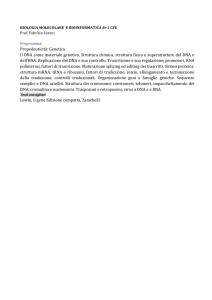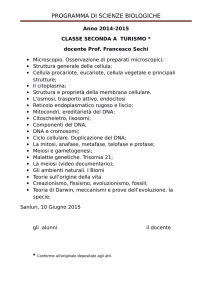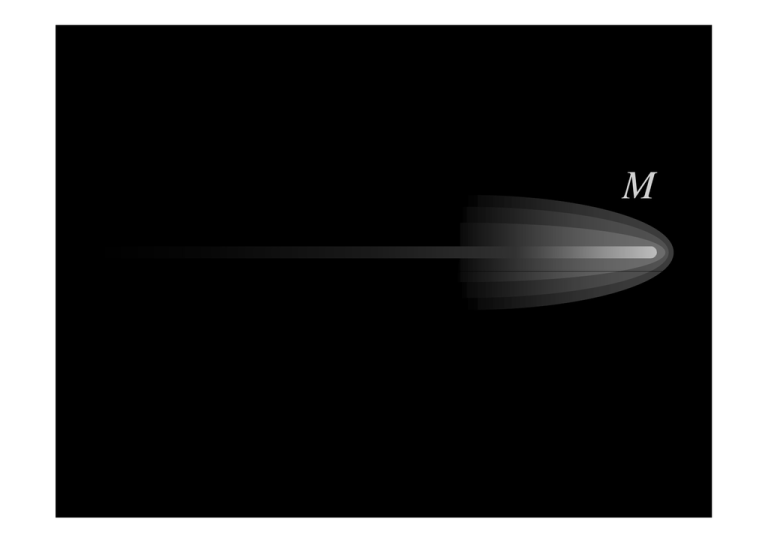
M
Basic theory
Miasmein: dirty
• Contagious disease
• relapses also in the case of well selected
remedy
• three reactivity (the firsts)
• the acute phase is a relapse of a pre-existing
background disease, and then is a vent to
not suppress
“ Were discovered only three miasmas which are the origin
of the most part of chronic diseases”
1) SYPHILIS: venereal chronic cancerous disease
(ulcerative)
2) SICOSIS: sicotic condilomatosous dyscrasia
3) PSORA: sinks its roots in the pruritic eruption
it’s the most important of all (Organon par. 31)
According to Hahnemann the identification of a
pathologic moment passes through one of three miasmas
The miasmatic “dye” would be conditional also
from the environment (Dynamic vision)
Nosode (homeopathic)
• Microbes, virus, secretions or pathologic
excretions, parts of the body or metabolic
products of humans or animals
Nel genoma i resti silenti di antiche
infezioni
•
•
•
•
•
•
•
Le sequenze di DNA di origine retrovirale che costellano il genoma umano sono tenute sotto controllo da
proteine inibitorie orchestrate da una proteina master, la KAP1
E' noto che il nostro genoma è composto per una sua frazione significativa da sequenze di DNA derivanti dal
patrimonio genetico di “invasori”, per lo più retrovirus, che infettarono milioni di anni fa i nostri antenati e in
particolare le loro cellule geminali.
Perché, e come, queste sequenze restino peraltro costantemente silenti e non provochino danni finora non era ancora
stato chiarito. Ora un gruppo di ricercatori del Politecnico di Losanna diretti da Didier Trono è riuscito a individuare
il meccanismo e lo descrive in un articolo pubblicato su “Nature”.
Studiando cellule staminali embrionali di topo, Trono e collaboratori hanno scoperto che il DNA di topo codifica un
cospicuo numero di proteine destinate a riconoscere le numerose sequenze di basi di origine virale presenti nel
genoma. I ricercatori hanno anche dimostrato che una proteina, chiamata KAP1, ha la funzione di orchestrare l'attività
inibitoria di tutte queste altre proteine di geni virali. Se KAP1 viene rimossa, il DNA virale si “risveglia”, determina
numerose mutazioni e l'embrione nella generalità dei casi muore.
Dato che i retrovirus tendono a mutare il DNA dell'ospite, hanno una enorme potenzialità e capacità di alterare i geni.
Nel corsi delle antiche pandemie alcuni individui sono stati in grado, grazie a opportune mutazioni, di sviluppare
meccanismi di silenziamento dei geni di questi virus, trasmettendo questa capacità alla propria progenie.
"Nel nostro genoma ritroviamo le tracce delle ultime due principali ondate. La prima ha avuto luogo 100 milioni di
anni fa, quando i mammiferi iniziarono a svilupparsi, la seconda circa cinquanta milioni di anni fa, proprio prima dei
primi primati antropoidi”.
La scoperta del meccanismo KAP1 potrebbe in prospettiva avere implicazioni nella ricerca di nuove strategie
terapeutiche per combattere l'AIDS, il cui virus può restare silente nelle cellule ematiche che infetta, così da
proteggersi dai possibili trattamenti. Il suo risveglio controllato potrebbe quindi permettere di aggredirlo. (gg)
(15 gennaio 2010)
isopathy
• Same morbid product
isopathy
• Jenner and smallpox vaccine
• Vannier and Nebel
• Julien took again in 960
isotherapeutic
• Isotherapeutic (from the patient)
– AUTOISOTHERAPEUTIC
– microbial isotherapeutic
•
•
•
•
Sterilized
inactive
sterility test
1/1.000.000
nosode
Class 1: from culture
Class 2: vaccines, serum, toxins
Class 3: secretions or pathologic excretions
Class 4: organs and tissues altered by
pathologies
• Class 5: different (pyrogenium, rotten meat)
•
•
•
•
• Inactivation guarantee
• 8 DH - 4 CH
• Least dilution according to the derivation
class
Nosode in M
Class 1: from culture
Class 2: vaccines, serum, toxins
Class 3: secretions or pathologic excretions
Class 4: organs and tissues altered by
pathologies
• Class 5: different (pyrogenium, rotten meat)
•
•
•
•
• In the departure nosode of the fourth classes
are present DNA’s fragments and immuneactive substances
• Deep action on the patient
– immunity, DNA regulation
Katherine S. Pollard - Biostatistica dell’Università di California a San
Francisco. Vincitrice Sloan Research Fellowship in biologia molecolare
evoluzionistica e computazionale.
Le Scienze - Agosto 2009
• “Il DNA umano è pieno dei residui delle
copie di questi piccoli genomi retrovirali,
provenienti da virus che causavano malattie
milioni di anni fa…Le cicatrici di queste
antiche infezioni si vedono anche nei geni
del sistema immunitario dell’ospite, che si
adattano costantemente a combattere i
retrovirus in continua evoluzione.”
• Gli introni sono retrovirus?
Katherine S. Pollard - Biostatistics University of California at
San Francisco. Winner Sloan Research Fellowship in
molecular biology and evolutionary computation.
• Science - August 2009
• "The human DNA is full of residues of these
small copies of retroviral genomes, from
viruses that cause diseases million years ago
... The scars of these early infections are seen
also in the genes of the host immune system,
which is constantly adapting to combating
retroviruses evolving."
• Introns are retroviruses?
M
• Regulative action on our DNA, against
external known aggressions or causes that
have modified the reactivity
• Action on the base reactivity, immunity and
nucleus in the case of grave or deep
pathologies, in the reinstatement’s logic of
DNA or immune
M-reactivity
Anatomical-functional organization of
the complexity
Everyone separate
by a membrane
Like briefcases and
files
body
organ
organ
organ
cells
cells
cells
nucleus
nucleus
nucleus
components
Nucleus
M
• Miasmatic
– homeopathic, nosode, phytoterapics
– in power concordance CH and LM
M
• Homeopathic
• Nosode
• phytoterapics
• 10-30-200 CH e 30-60 LM
LM
• Organon 6°
• Without worsening
M
nosodes
Homeo
phyto
M7
•
•
•
•
•
graphites
hepar sulphur
natrium sulphuricum
psorinum
sulphur
• 10-30-200 CH
30-60LM
handbook
M
•
•
•
•
•
M EXOGENOUS
1 virus
2 bacteria
3 parasites
4 vaccinations
5 herpes *
* = not in fitomega
M ENDOGENOUS
• 6 tubercolinum
• 7 psorinum
• 8 medorrhinum *
• 9 carcinosinum *
• 10 luesinum *
• 11 mixed from 6 to10
M exogenous
•
•
•
•
•
M 1 virus
M 2 bacteria
M 3 parasites
M 4 vaccinations
M 5 herpes
• Action on aggressors’ DNA
M exogenous
• M 1 virus (cold, flu, measles, rubella, roseola, varicella,
hepatitis, poliomyelitis, herpes, cytomegalovirus, yellow
fever, mononucleosis)
• M 2 bacteria (scarlatina, staphylococcus, gonorrhea,
pneumococcal, erysipelas, salmonella, brucella,
campylobacter, actinomycosis, spirochaete, TBC,
rickettsie, chlamydia, typho, cholera, leptospirosis, lyme,
leprosy)
• M 3 parasites (malaria, toxoplasma, ossiuri, ascaride, tenia)
• M 4 vaccinations
• M 5 herpes
M endogenous
•
•
•
•
•
•
M 6 tubercolinum
M 7 psorinum
M 8 medorrhinum
M 9 carcinosinum
M 10 luesinum
M 11 mixed
• Action on reactivity of patient’s DNA
M endogenous
•
•
•
•
•
•
M 6 tubercolinum
M 7 psorinum
M 8 medorrhinum
M 9 carcinosinum
M 10 luesinum
M 11 mixed (6-7-8-9-10)
use
M use
• prophylaxis
– immune and DNA stimulus and on the patient’s
background reactivity
• acute
– healing vaccine
• chronic
– pathogenetic simile (provings)
– anamnestic (to cancel the interferences)
– current etiological or its sequelae
M use
• Always drain !!!
M how
• 20 * 2 a day
• Dynamize each time
progression
• Latent pso
• Manifest psora
– Tbc in pho
• Sic
• Lue
• Carc
• Tbc = pso + sic
• Carc = sic + lue
• Pso
• Tbc
• Sic
• Lue
• Carc
The end
New vision
Prof. Michele Sarà
• Professor emeritus UNIGE
• Biology and zoology teacher at UNIBA and
UNIGE
• More than 400 publication, mainly on
international reviews
• L’evoluzione costruttiva
UTET – Torino 2005
Centrality of DNA
• “Al centro della vita della cellula va posta,
comunque, la regolazione dell’espressione
genica, che presiede, modulandola, alla
sintesi proteica e non è un fenomeno solo
genetico, ma anche epigenetico.” pg. 149
• Ex junk DNA
• "At the center of the life of the cell is
placed, however, the regulation of gene
expression, presiding, modulation, protein
synthesis and is not a phenomenon only
genetic but also epigenetic." Pg. 149
• Former junk DNA
DNA and environment
• “il passaggio dell’informazione genetica dai
geni alle proteine è regolato, modulato e
variato da una serie di processi epigenetici
collaterali che si svolge sia nella cellula sia
nell’organismo pluricellulare e che
consentono di adattare l’uso del codice
genetico alle necessità complessive
dell’organismo, ivi comprese le richieste
ambientali” pg. 163
• "The passage of genetic information from
genes to proteins is regulated, modulated
and varied from a range of epigenetic
processes reactions that take place both in
the cell or multicellular organism to adapt
and allow the use of the genetic code to the
overall needs of 'body, including the
environmental demands "pg. 163
Reactivity, Environment, Stimuli
• “Quest’ordine, molto dinamico, porta a continue
variazioni di espressione dei geni in rapporto alle
diverse esigenze funzionali, modulate anche dalle
differenti situazioni ambientali” pg. 133
• Stimoli : calorici, elettrici, sostanze (pict. Pg. 248)
• "This order, very dynamic, leads to
continuous changes in gene expression in
relation to different functional requirements,
also modulated by different environmental
situations," pg. 133
• Stimuli: heat, electric, substances (pict. Pg.
248)
Inside environment and Reactivity
• “A questo filtro, all’ambiente interno, è
devoluta la regolazione e l’integrazione
delle attività cellulari in modo che esse
rappresentino risposte unitarie
dell’organismo complessivo.” pg. 158
• ”At this filter, indoor environmental
regulation is devolved integration of cellular
activities so that they represent joint
response of the organism as a whole." Pg.
158
Evo-Eco-Devo
• Evolution
• Ecology
• Development
• “.. L’evoluzione degli adattamenti ed in
particolare il ruolo della plasticità fenotipica
in tale evoluzione.” pg. 246
• Evolution
• Ecology
• Development
• ".. The evolution of adaptations, in
particular the role of phenotypic plasticity
in this development. "Pg. 246
New Homeopaty
L.Turinese
pso
• Alternation of cutaneous and internal that
develop for crisis
• allergies
• dysmetabolism
• it gets better with the centrifugal
elimination
pso
•
•
•
•
•
•
•
•
•
Alternation
periodicity
skin
parasitism
congestion
beginning and sharp ends
improvement with liquid drainage
metabolic overloads
extrovertion
pso
• sulph
• hep
• caca
• lyc
tbc
• Nebel
• ipoergic psora
• more variable
• Mucosal psora
tbc
•
•
•
•
•
•
•
•
Variable symptoms
respiratory
venous congestion
acute diseases followed by asthenia
anemia
fatigue
aggravation with the elimination
hyper-sensibility to pain
tbc
• phos all
• sil
• tuberculin
• namu
• puls
med
•
•
•
•
•
•
•
Retention
chronic catarrhs
excretions
lymphatic congestion
constant asthenia
periarticulate
subcontinuous course
med
•
•
•
•
caus
med
sil
thu
• nasu
• nitac
lue
•
•
•
•
•
•
•
psychic instability and changes
phobias
ulcerations
sclerosis
cutaneous fissures
hard lymphadenopathies
night aggravation
lue
•
•
•
•
merc
aur
arg
flu all
• plum
• plat
carc
• Vannier
• degenerations
• on all the miasmas, more on sicosis
Carc CI
• defedati
• pregnancy
• autoimmune pathologies in relapse
The end

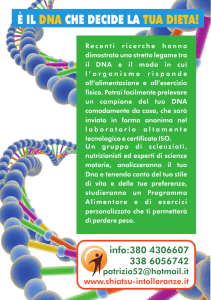
![mutazioni genetiche [al DNA] effetti evolutivi [fetali] effetti tardivi](http://s1.studylibit.com/store/data/004205334_1-d8ada56ee9f5184276979f04a9a248a9-300x300.png)
![ESTRAZIONE DNA DI BANANA [modalità compatibilità]](http://s1.studylibit.com/store/data/004790261_1-44f24ac2746d75210371d06017fe0828-300x300.png)
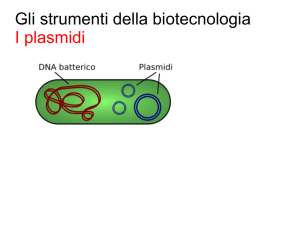
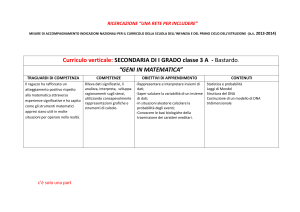
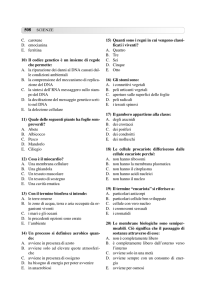
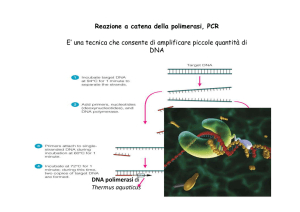
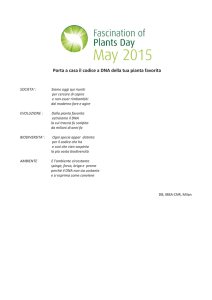
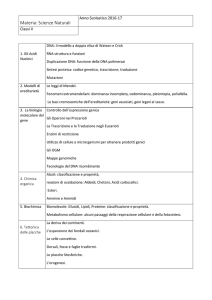
![(Microsoft PowerPoint - PCR.ppt [modalit\340 compatibilit\340])](http://s1.studylibit.com/store/data/001402582_1-53c8daabdc15032b8943ee23f0a14a13-300x300.png)
